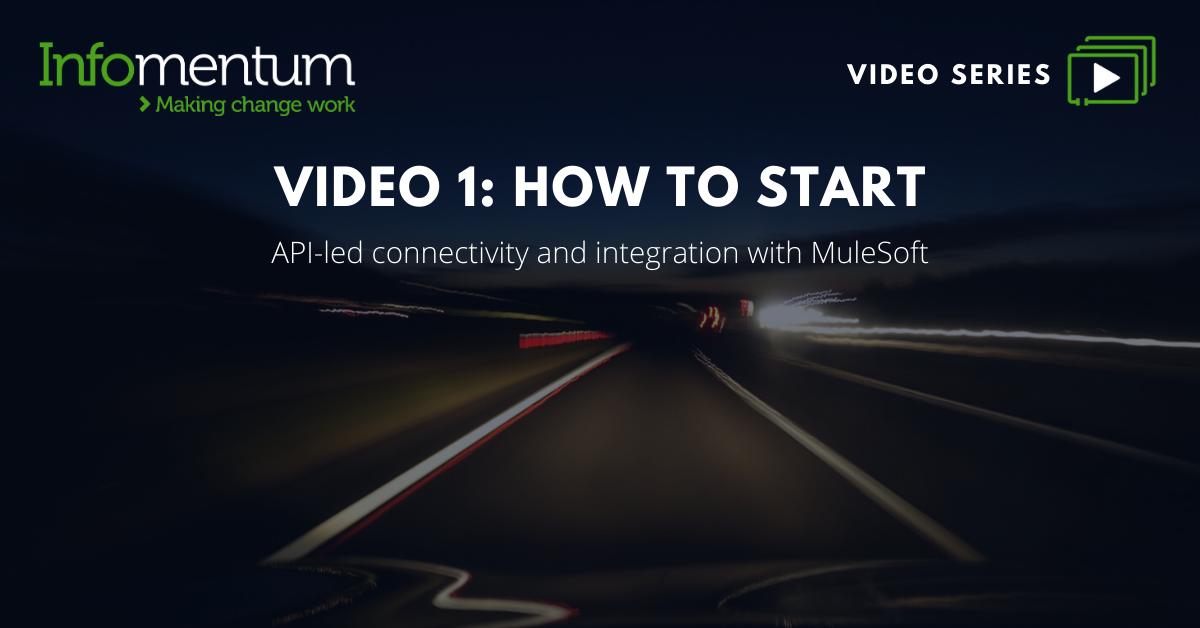VIDEO SERIES
API adoption & scalability
Our approaches | How to start an API-led integration project
Episode 4
How to ensure API adoption & scalability.
It's still common to believe that a new software tool will be accepted and appreciated straight away. But what really happens after you spend $$$ on a new platform? Are people in your company ready to adopt it?
Though most organisations understand the value of API-lead connectivity and integration platforms like MuleSoft, a significant cultural change is required for the new approach to be accepted and embraced. Today we discuss how to ensure the API-connectivity adoption and accelerate its scalability.
Vikram Setia and Dan Shepherd discuss the importance of APIs adoption and scalability.
Vikram Setia and Dan Shepherd discuss the importance of APIs adoption and scalability.
API-connectivity adoption.
The key is to approach the API-connectivity adoption from the top down. CIOs must act as trail-blazers when rolling out the new technology. It's important to remember that the Anypoint Platform is not an attractive application with a friendly interface that business users can touch and feel. It's essential to educate those users to understand and appreciate the value of the integration platform. We always involve business users by running sprint demos and feedback sessions. There are many ways to demonstrate the advantages of API-connectivity to the rest of the organisation. Select the first project that may not bring the highest ROI but causes pain to many departments. Solving this problem will win over the hearts of many, making it much easier for them to accept the new approach. If the first project brings value to your department only, make sure you demonstrate its benefits to the rest of the organisation.
We've recently worked on a project to apply API-led integration to unlock data from the Salesforce CRM platform surfacing it to one of the customer's end-users. Within weeks we found an internal opportunity to reuse that data for another of their departments. When you release valuable information, and other business units get a sniff of it, you would be surprised by the number of interested parties trying to access it. By demonstrating the effective reuse of data through APIs, you encourage a wider adoption across your organisation. It's a win-win situation!
Scaling your APIs.
You've completed a successful POC or went live with your first API-based project. How do you then scale it across your organisation or even external partners? From day one, everything you design or build, you should always approach with reuse in mind. Working with technologies like MuleSoft gives you a perfect framework to create a highly efficient and reusable network of API-based integrations. According to MuleSoft, the percentage of APIs available for reuse increase from 33% to 75% in only three years. The larger reuse scale means higher ROI, less time to maintain the integrations and much faster release of new projects.
We've discussed before the significance of the API-lead economy and the whole concept of an application network. MuleSoft describes the application network as "a way to connect applications, data and devices through APIs that exposes some or all of their assets and data on the network". To be a part of a network, all assets should be built with the ability to plug-and-play. Systems and applications change over time. You don't want to be locked into a design that tightly couples you to those systems. If you challenge yourself around reusability from your project's start, it will set you up for success further down the line.
And to ensure that you can scale even faster, leverage the power of continuous integration. Automate as much as possible! You want to be focusing your time on developing, building and adding value and not wasting time on repetitive tasks and activities. Automate throughout the whole delivery lifecycle to streamline your delivery, quality control and testing.
In our final session, we will be talking about what NOT to do when starting an API-led integration project. See you then.
If you have any questions regarding the issues, we covered in this video or want to discuss your challenges, talk to our integration team.


